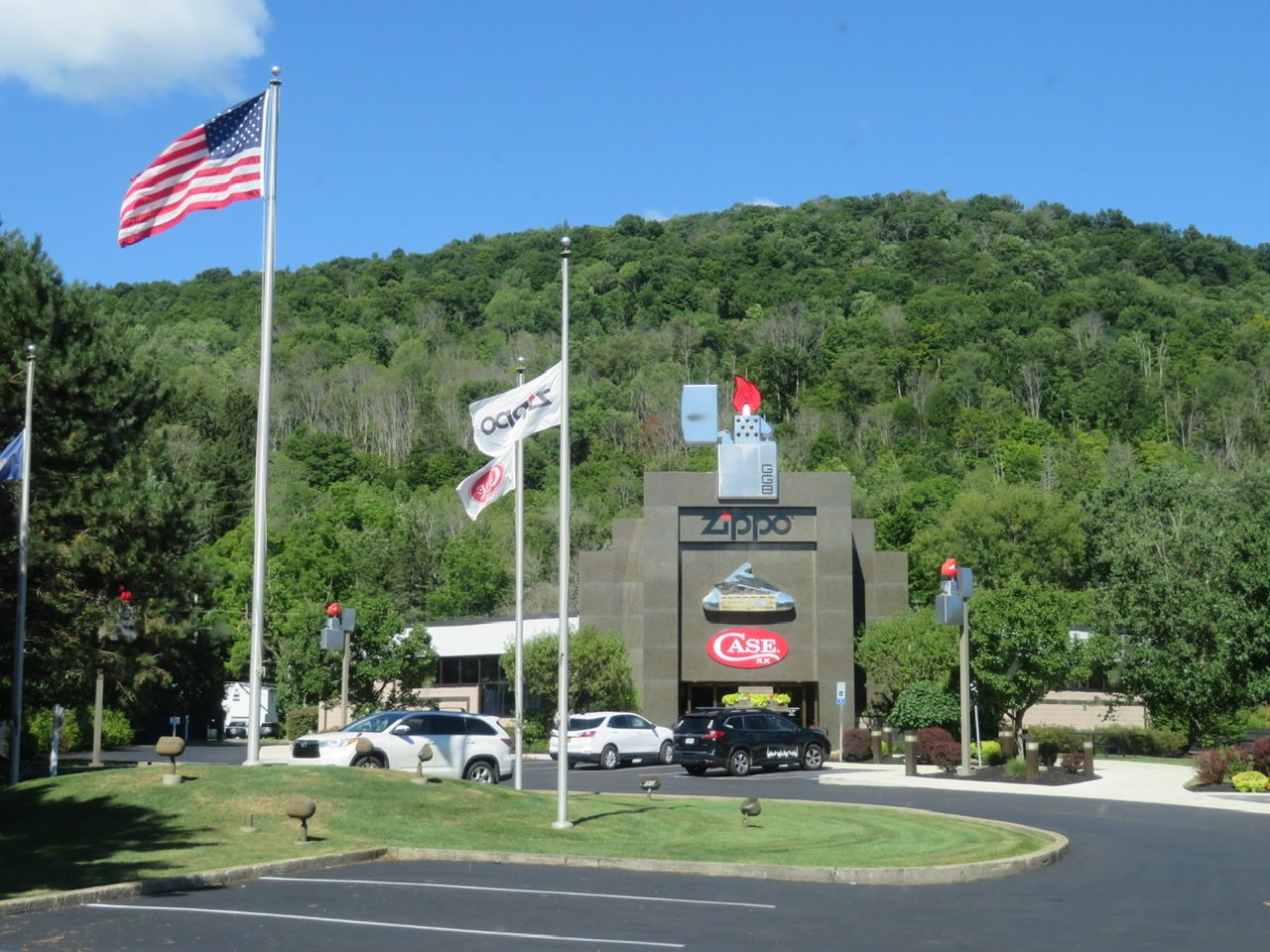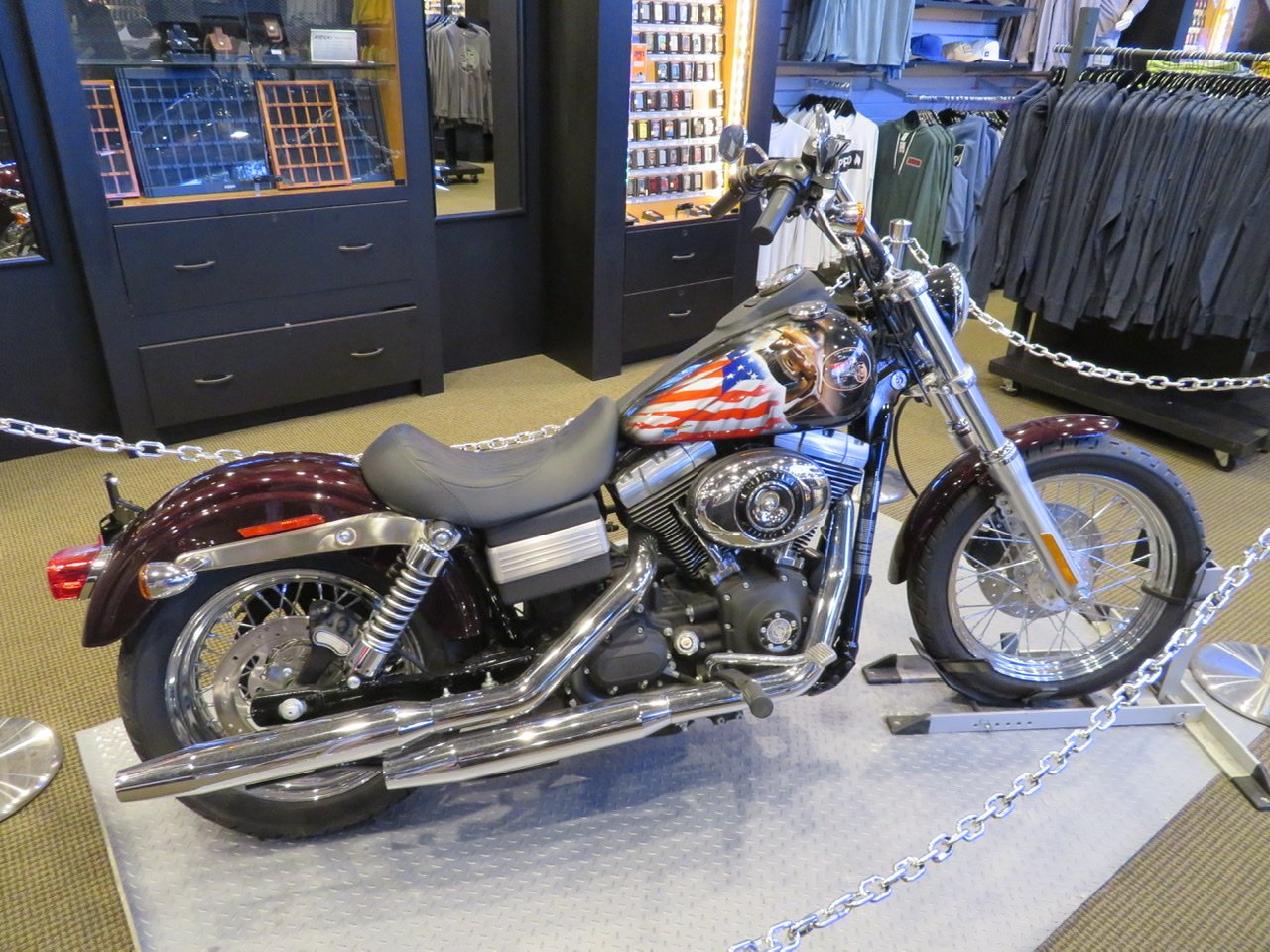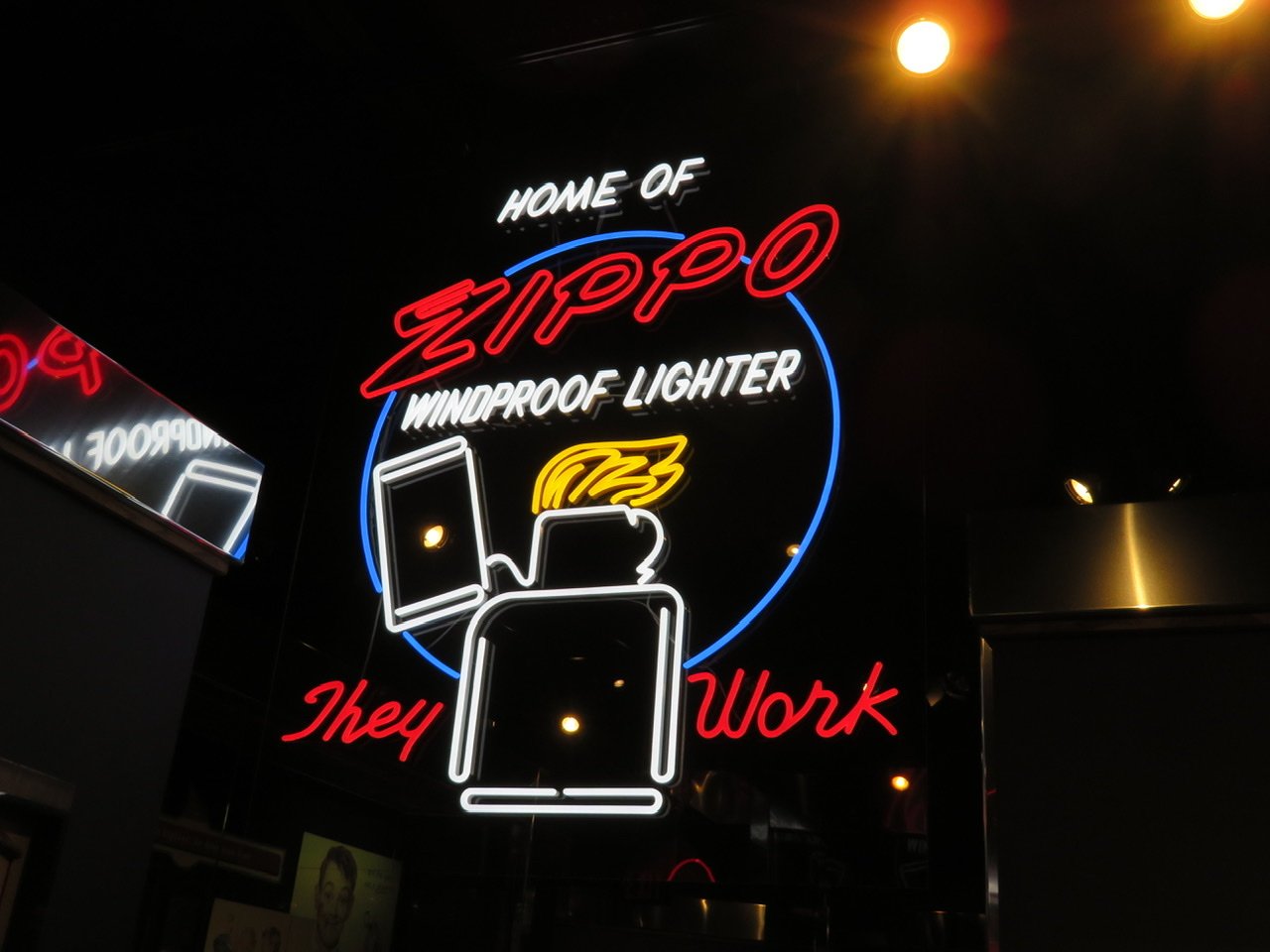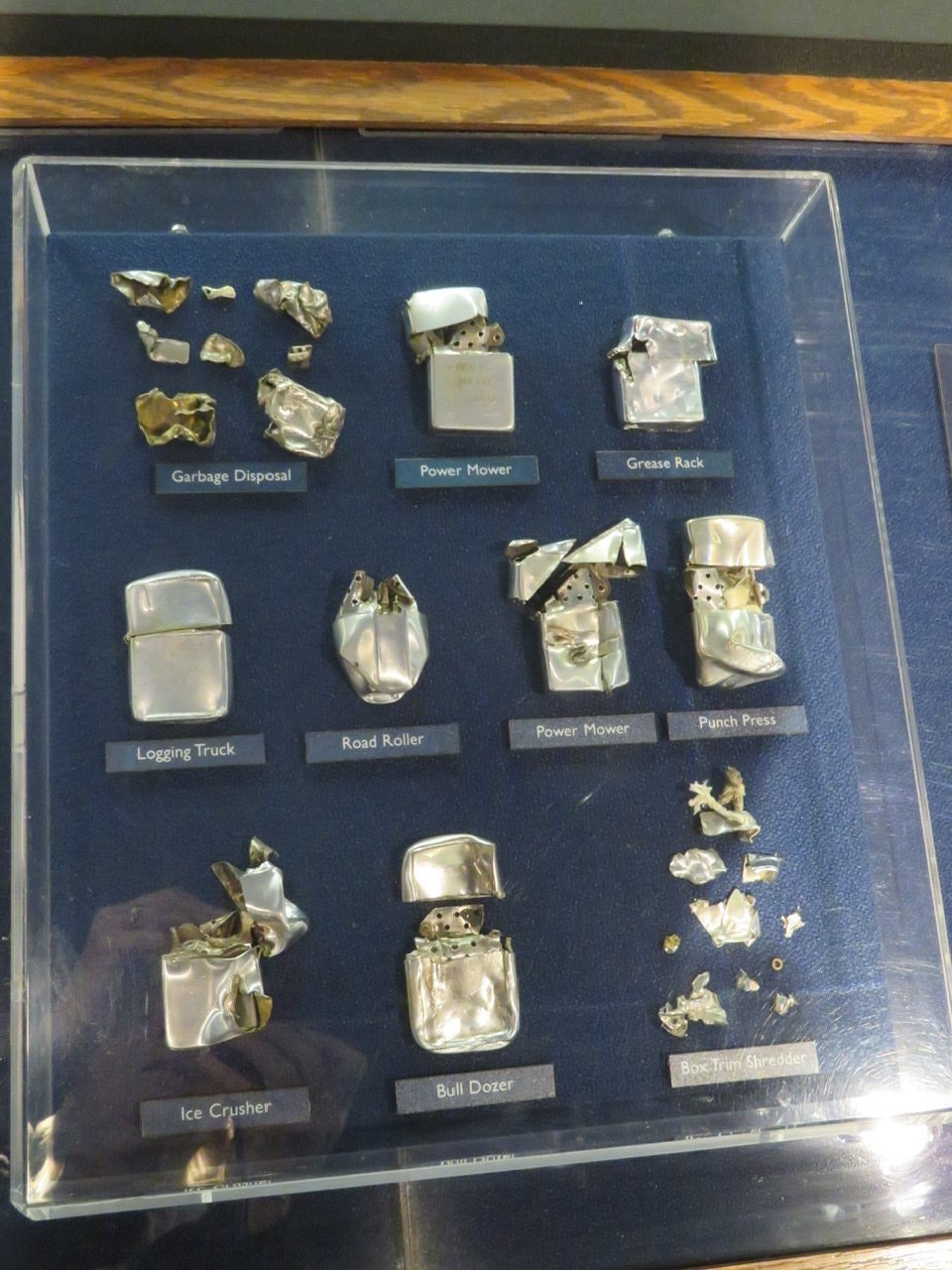Carousels, A Famous Grave and the Zippo Museum
/When we finished riding the C&O Canal Towpath, we headed north to Rhode Island to visit Lin and her family. Our original plan was to stay and help Lin while she recuperated from hip replacement surgery, but the surgery was unexpectedly postponed for three weeks. Now what? We’re pretty adaptable and decided maybe we should just cycle another segment or two of the GART in the meantime.
David was all geared up to head directly back to Pittsburgh and hit the trail. Not so fast! After checking Atlas Obscura and Roadside America, I found there was plenty to see and explore en route and the trail would still be there even after a couple of days delay. Using my feminine wiles, he was easily persuaded.
Carousel Capital of the World
First stop, Binghamton, New York… it’s the “Carousel Capital of the World”. Who knew? According to the Broome County brochure, ‘Between 1919 and 1934, George F. Johnson, shoe manufacturer and benefactor, donated six carousels to local parks’ with the caveat that they would always be free for everyone to ride.
Johnson was quite the philanthropist and we learned lots about him in an exhibit at the local visitor center. According to wiki, “In 1899, Johnson became co-owner of the business with Henry B. Endicott which was renamed the Endicott-Johnson Shoe Co. Under his presidency, the company grew to eight factories employing as many as 20,000 people. Endicott-Johnson was the first company in the shoe industry to introduce the 8-hour workday, 40-hour workweek, and comprehensive medical care.” Despite his generosity towards his employees, the company always remained profitable. He is still revered and his legacy is seen throughout the local towns in the parks, housing, medical facilities, schools and libraries that he sponsored. In fact, his own employees erected this arch in 1920 as a tribute to Johnson and the EJ Company.
The wood-carved carousels, all located in the greater Binghamton metro area, were manufactured in Tonawanda, New York. They all require considerable and constant maintenance. Two still revolve to the calliope tunes of the original Wurlitzer band organ. And to this day, everyone rides for free.
We set about visiting all six. First on our list was the oldest carousel installed in 1920 at Ross Park, which also, by the way, is home to the 5th oldest zoo in the USA. There is an admission fee to the zoo, but visiting the carousel, just outside the zoo grounds, is free… except it was closed for repairs.
Some of the carousels were large and some were small. All had ‘jumpers’, i.e. the horses went up and down. Some were in better repair than others. Some of the hand carved detail and bright colors were stunning. C. Fred Johnson Park boasts the largest carousel, but it wasn’t yet open. We peeked through the carousel pavilion windows for a photo.
Because the other carousels didn’t open till Noon and we were early, sneak peeks were the best we could do until the George W. Johnson Park. I was the first rider of the day and had the entire carousel to myself. The operator, a high school kid, was uninspired by her job. After a few spins around, I admit, I was pretty bored myself.
By the time we reached the last carousel, I only took a couple of photos, but looking at them later, they looked like all the others. We climbed into Blanche and we were off to Elmira.
Mark Twain’s Grave
We stopped at Woodlawn National Cemetery in Elmira, New York to pay our respects to Samuel Langhorne Clemens, aka Mark Twain. As its most famous resident, the cemetery has provided ample signage to the gravesite which is the Clemens family plot.
Clemens lies next to his wife, Olivia. All of his children and his only grandchild are all buried there. Elmira was a summer retreat for Clemens where, in a small cottage fashioned in the shape of a steamboat’s pilot house, he wrote some of his most famous works… Huckleberry Finn, Tom Sawyer & A Connecticut Yankee in King Arthur’s Court.
Zippo Museum
On to Bradford, Pennsylvania and the Zippo/Case Museum. The museum offers a free, self-guided tour and is also the Zippo flagship store. Even the lamp posts looked like Zippos.
Out front is the Zippo Car, a somewhat modified 1947 Chrysler New Yorker and the Zippo Jeep. Even the lampposts were fashioned to look like pocket lighters. No disposable Bics here.
Inside we saw a 75th commemorative Zippo Harley Davidson Street Bob motorcycle on display.
We were amazed at the sheer number and styles of Zippo lighters produced as well as the number of collectors there are out there… evidently hundreds of thousands. Memorabilia and old ad campaigns and slogans were on display. Clips from some of the 2000 movies that Zippo lighters have appeared in were showing.
The museum is well laid out and quite interesting. Of special interest were the displays of soldiers and military personnel using lighters during wartime. Letters from war correspondent, Ernie Pyle, as well as several generals like Eisenhower and Bradley, were on display and thanked Blaisdell for sending lighters to them and to thousands of soldiers during WWII. Evidently, Vietnam War era lighters are highly sought after by collectors.
Zippo’s motto ‘It works or we fix it free’ ™
‘Whether a Windproof Lighter is 5 years, 25 years, or 50 years old, it will serve as a dependable source of flame for years to come - we guarantee it!’ We got a kick out of the lighters that have been returned for repair.
It was a very busy day, but there was still more to see. Another day of exploration was in the offing. Next time, walk with us on the Kinzua Skywalk and then get up close and personal with Punxsutawney Phil.















